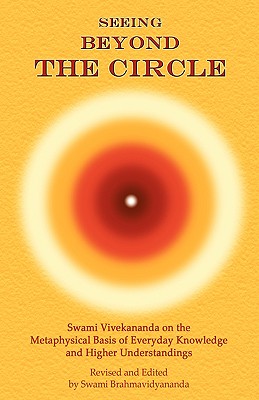There has always been an ongoing dispute between the realists and the idealists as to what is ultimate and fundamental. The realists see matter as absolute, whereas the idealists see mind as absolute. Swami Vivekananda sees both mind and matter as aspects of a larger reality. The human soul is not separate from other souls, but is an expression of one singular, spiritual Ocean out of which the whole of creation arises. Our problem is that we are clinging to the waves rather than opening out and resting in the Ocean or Source Itself. This is all explained in the ancient Sankhyan model of perception and evolution, which Swami Vivekananda empowers with the philosophy of non-dualism. Among other things, Vivekananda puts the traditional Sankhyan idea of the gunas into a familiar psychological context: tamas being attraction, rajas being aversion, and sattva being balance. Almost a century earlier, Georg Wilhelm Friedrich Hegel, the German philosopher framed this dynamic as thesis or status quo (tamas), antithesis or breaking free, (rajas), and synthesis or ongoing levels of integration (sattva). In light of Swami Vivekananda's message, the Vedic position gives this process a higher evolutionary direction, that direction being an experience of a spiritual Reality that is omnipresent and ever-free.
| FindBook |
有 1 項符合
Seeing Beyond the Circle的圖書 |
 |
Seeing Beyond the Circle 作者:Brahmavidyananda 出版社:Temple Universal Publishing 出版日期:2005-11-25 語言:英文 規格:平裝 / 312頁 / 21.6 x 14 x 1.8 cm / 普通級 |
| 圖書館借閱 |
| 國家圖書館 | 全國圖書書目資訊網 | 國立公共資訊圖書館 | 電子書服務平台 | MetaCat 跨館整合查詢 |
| 臺北市立圖書館 | 新北市立圖書館 | 基隆市公共圖書館 | 桃園市立圖書館 | 新竹縣公共圖書館 |
| 苗栗縣立圖書館 | 臺中市立圖書館 | 彰化縣公共圖書館 | 南投縣文化局 | 雲林縣公共圖書館 |
| 嘉義縣圖書館 | 臺南市立圖書館 | 高雄市立圖書館 | 屏東縣公共圖書館 | 宜蘭縣公共圖書館 |
| 花蓮縣文化局 | 臺東縣文化處 |
|
|
圖書介紹 - 資料來源:博客來 評分:
圖書名稱:Seeing Beyond the Circle
|









